Model Drift
Designing Forecasting Pipelines for Production

Rami Krispin
Senior Manager, Data Science and Engineering
Model drift
- Model performance degrades over time 📉
$$
$$
$$
- Often driven by concept drift
$$
- Historical models become misaligned ❌
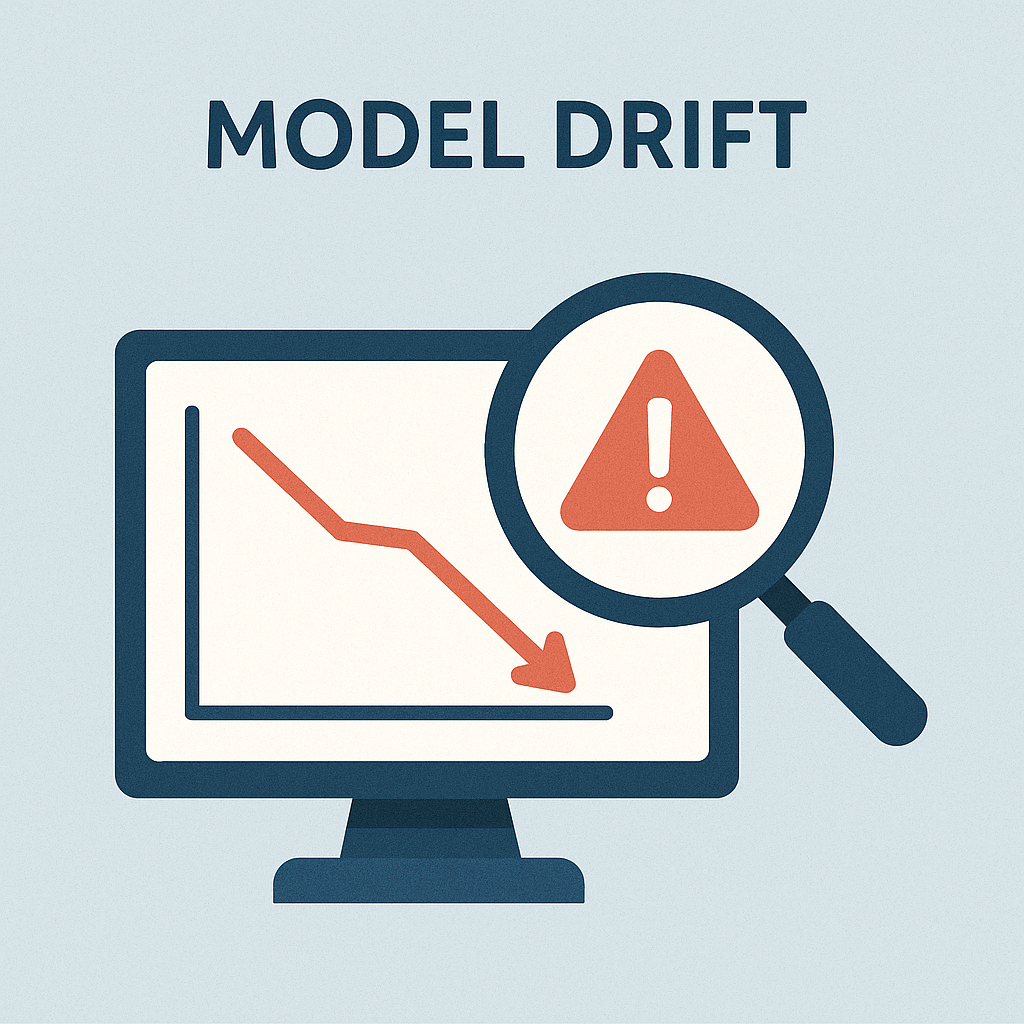
Concept drift
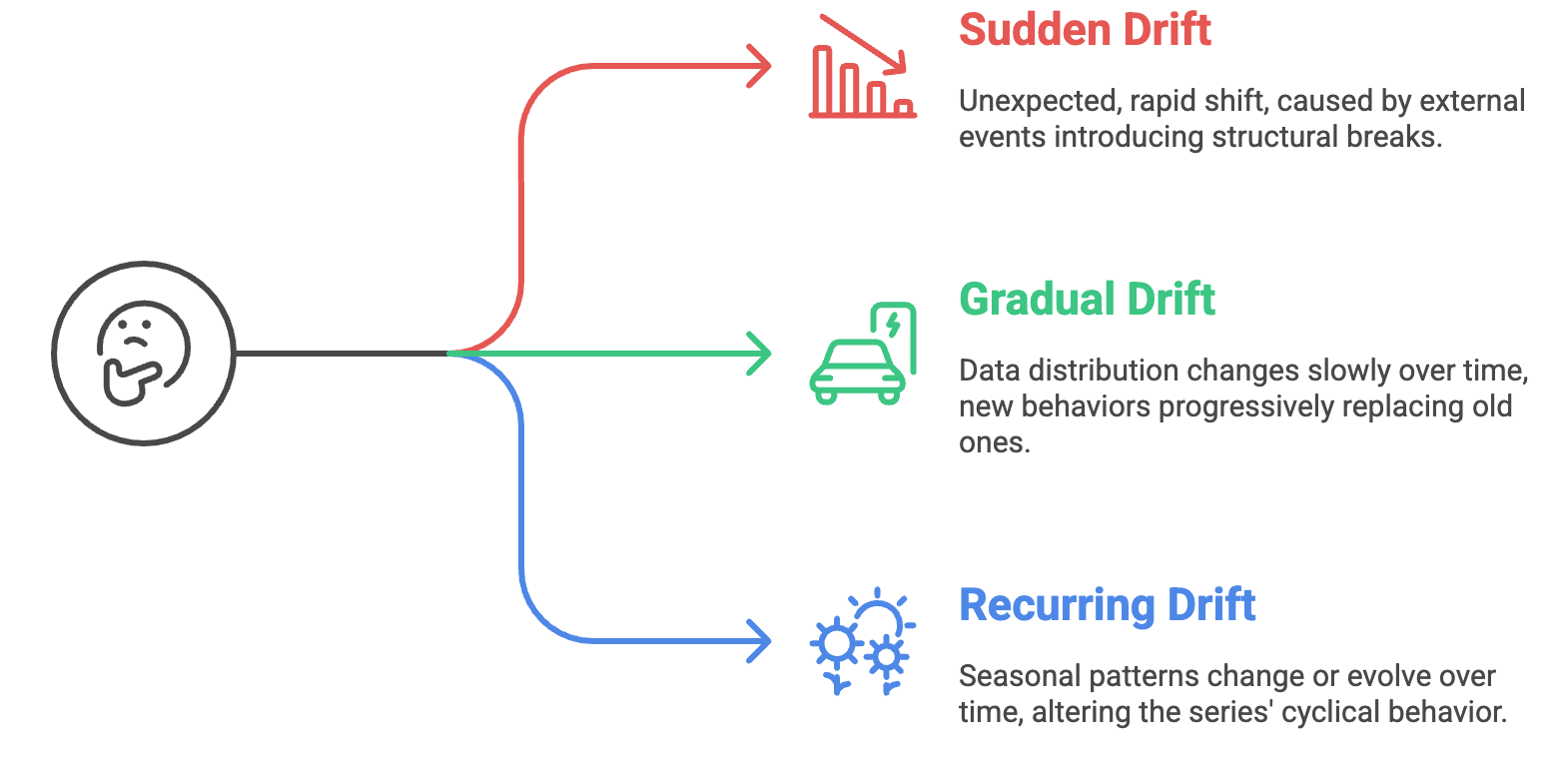
Other causes of model drift
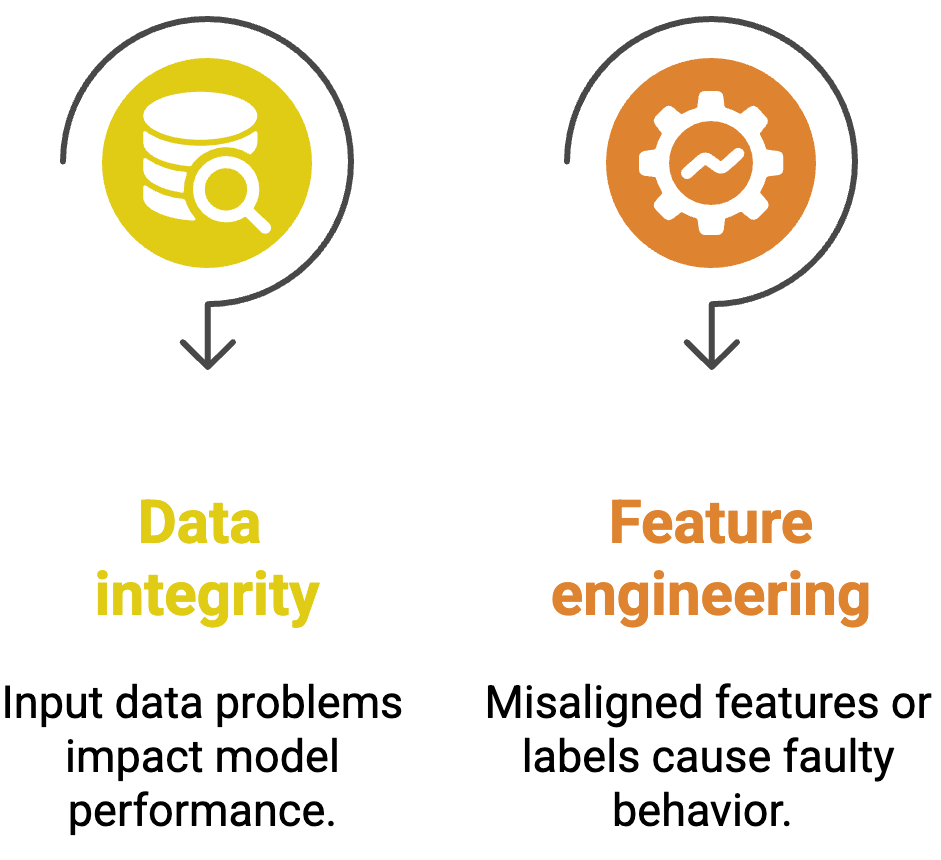
Model life cycle
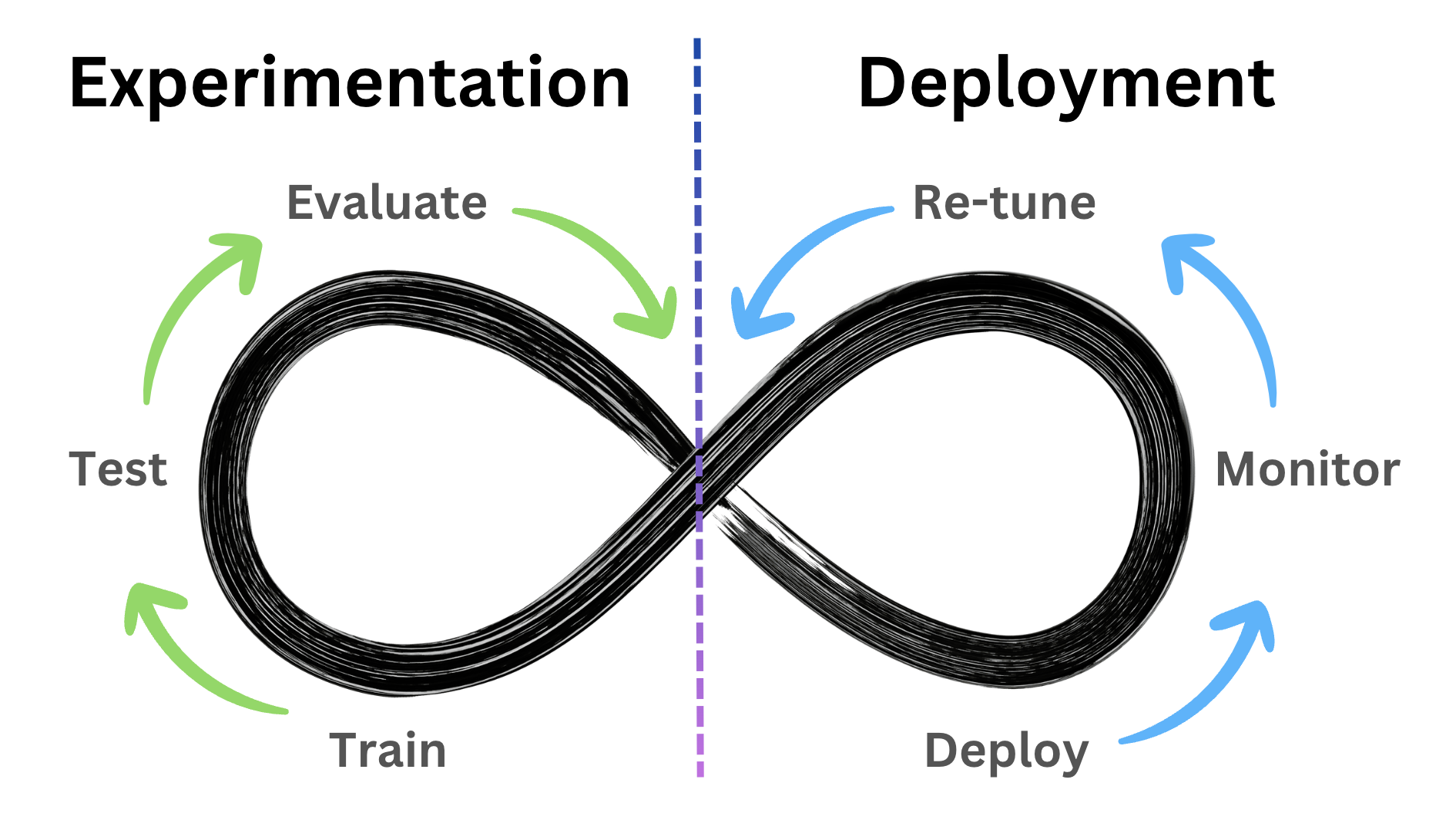
Detect model drift
$$
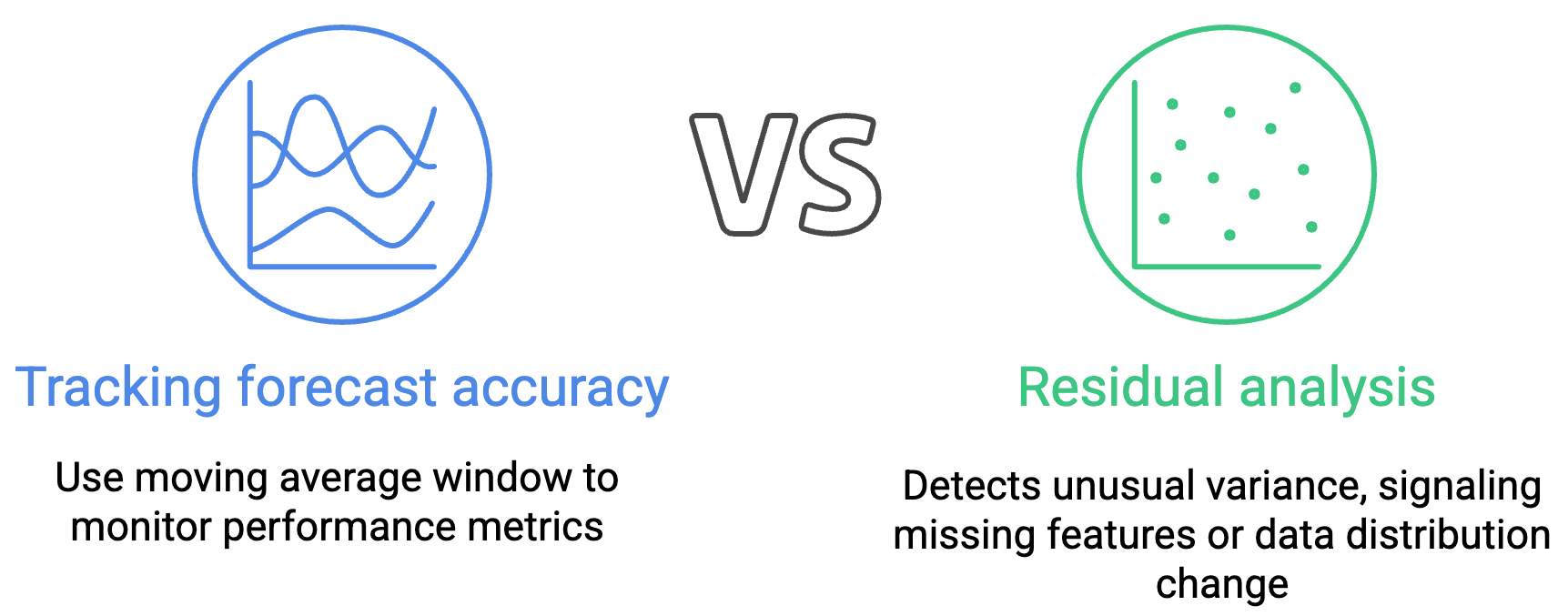
Detect model drift
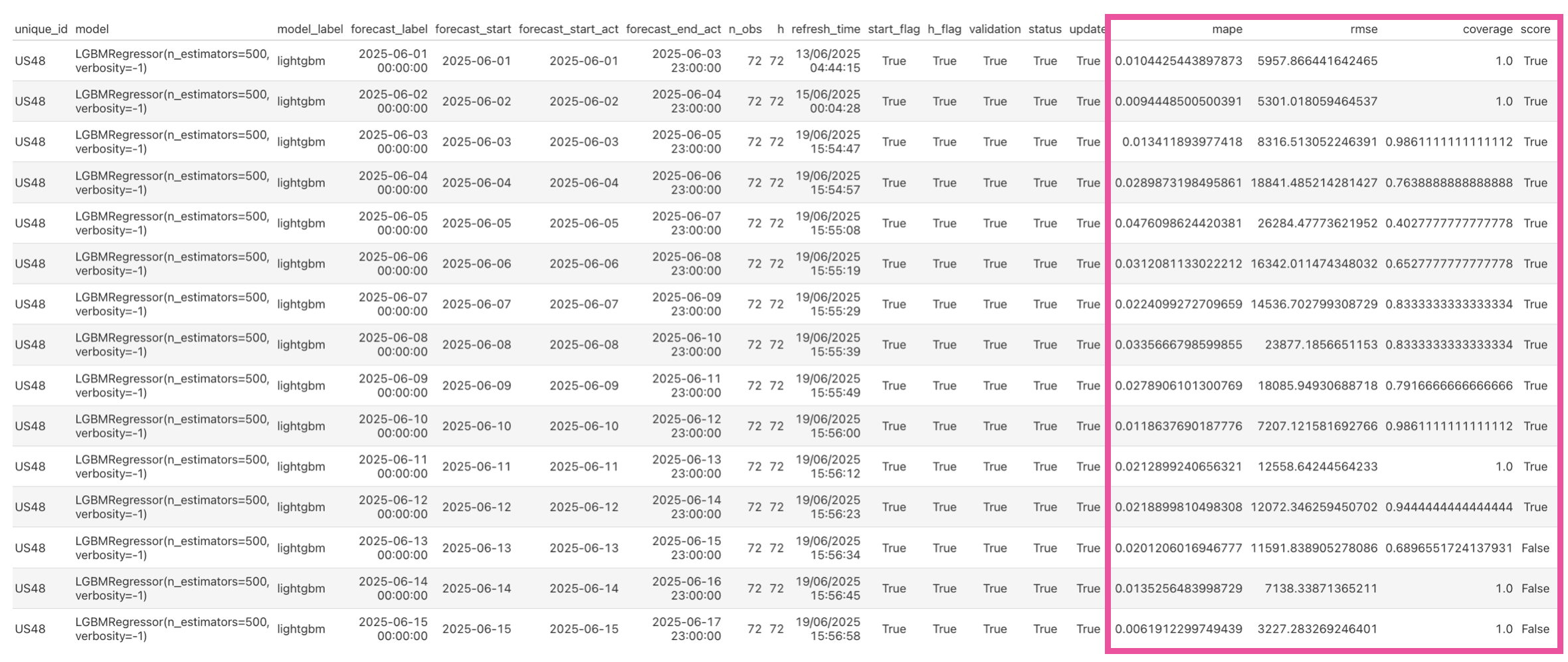
Identify drift
import pandas as pd import plotly.graph_objects as go fc_log = pd.read_csv("./data/us48_forecast_log.csv")fc_log["mape_ma_7"] = fc_log["mape"].rolling(window = 7).mean() fc_log["mape_ma_14"] = fc_log["mape"].rolling(window = 14).mean()
Identify drift
print(fc_log[["mape_ma_7","mape_ma_14"]].tail(10))
mape_ma_7 mape_ma_14
120 0.054181 0.043237
121 0.062931 0.047272
122 0.063285 0.045938
123 0.058811 0.046456
124 0.060165 0.046120
125 0.055948 0.045952
126 0.043080 0.045459
127 0.035748 0.044965
128 0.028009 0.045470
129 0.025801 0.044543
Identify drift
threshold = 3
Identify drift
threshold = 3# Setting plotly figure p = go.Figure() # Add the model performance (MAPE) over time p.add_trace(go.Scatter(x = fc_log["forecast_start"], y = 100 * fc_log["mape"], mode="lines", name="MAPE", line=dict(color='royalblue', width=2))) # Setting the plots layout p.update_layout(title = "Forecast Error Rate Over Time", xaxis_title="Model Error Rate Since Deployment", yaxis_title="MAPE (%)")
Identify drift
# Adding the threshold and 7 and 14 rolling windows p.add_shape(type="line", x0=fc_log["forecast_start"].min(), x1=fc_log["forecast_start"].max(), y0=threshold, y1=threshold, line=dict(color="red", width=2, dash = "dash"))p.add_trace(go.Scatter(x = fc_log["forecast_start"], y = 100 * fc_log["mape_ma_7"], mode="lines",name="7 Days MA", line=dict(color="green", width=2))) p.add_trace(go.Scatter(x = fc_log["forecast_start"], y = 100 * fc_log["mape_ma_14"], mode="lines",name="14 Days MA", line=dict(color="orange", width=2)))p.show()
Identify drift
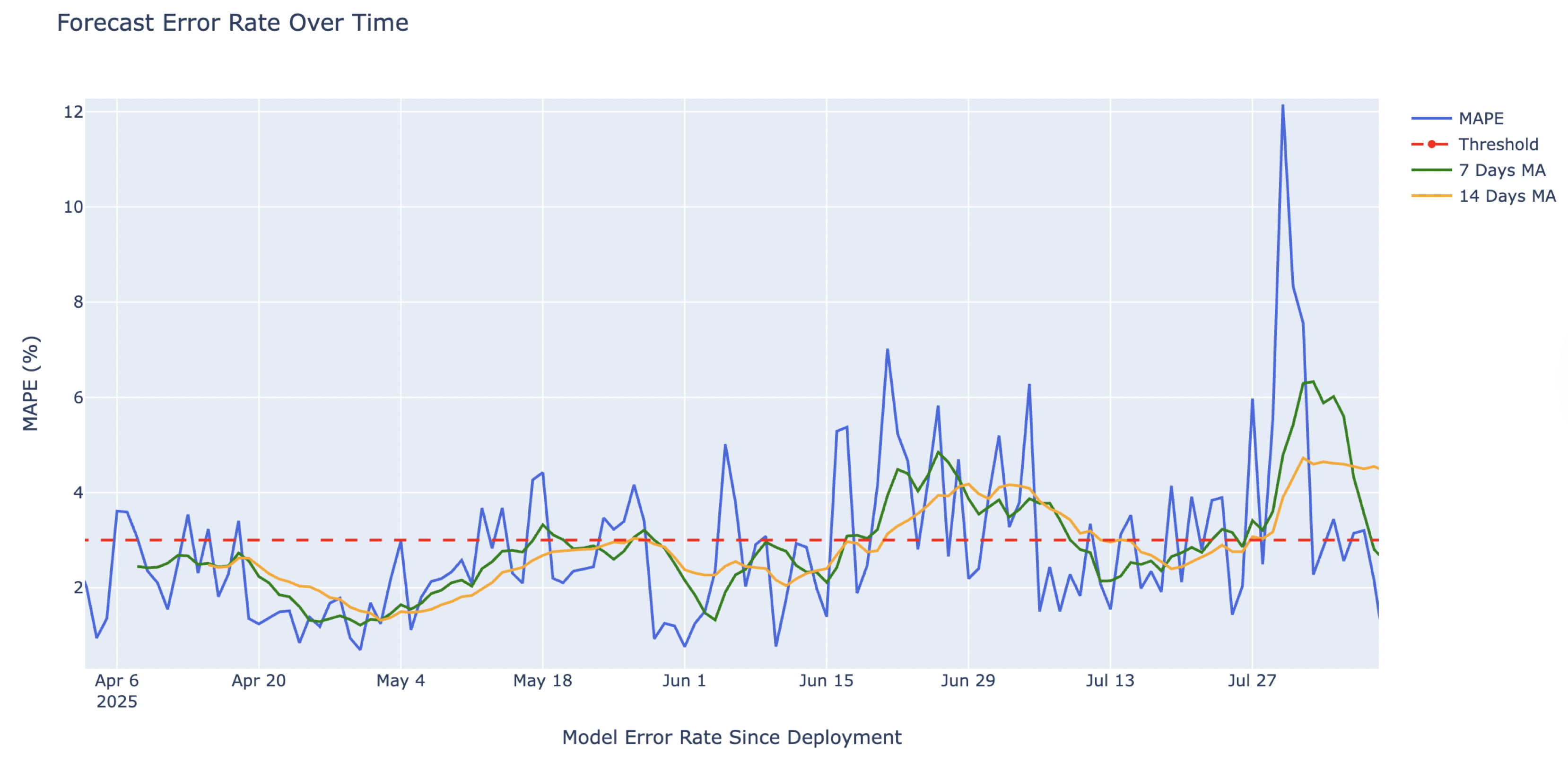
Identify drift
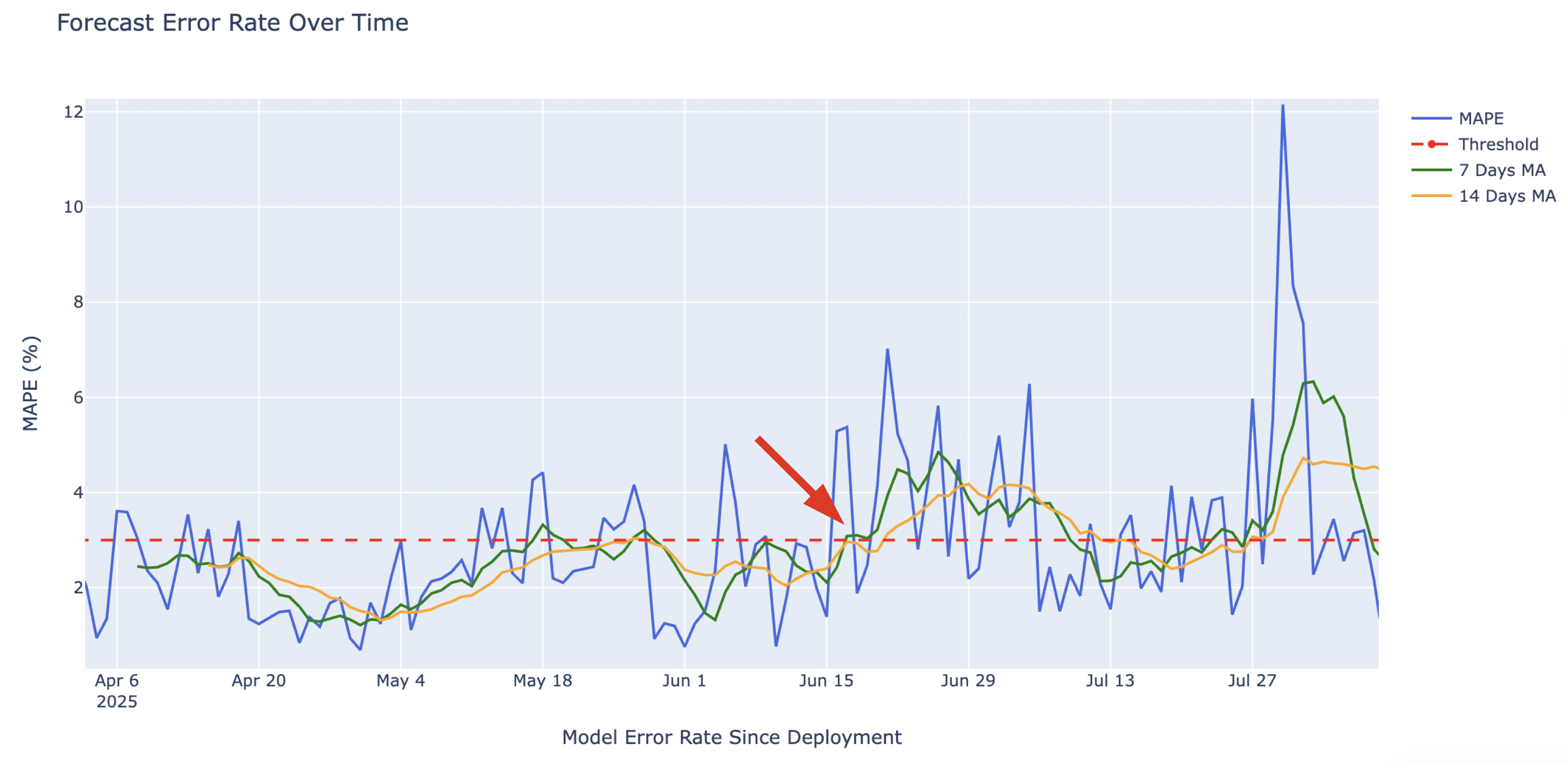
Identify drift
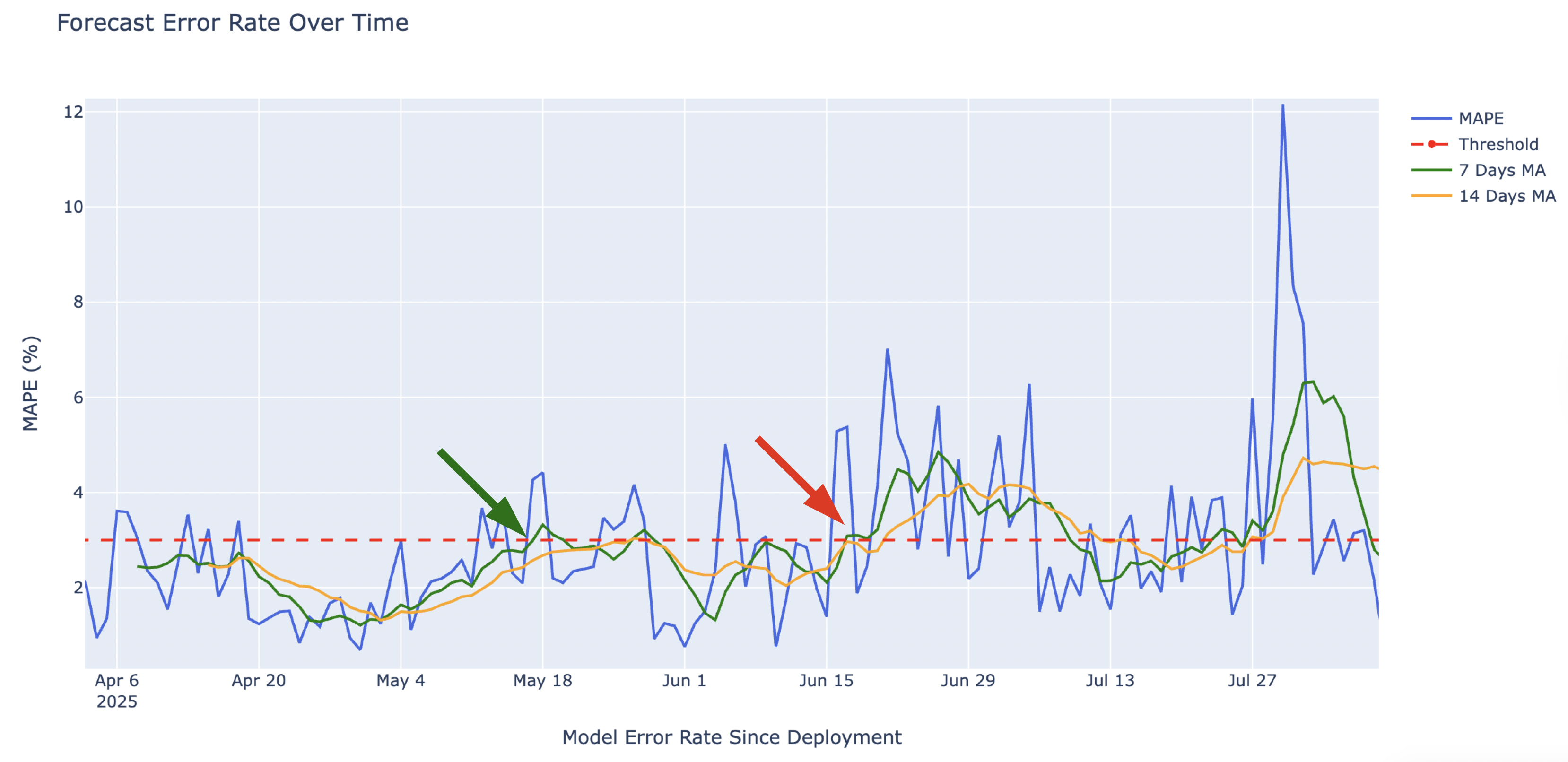
Identify drift
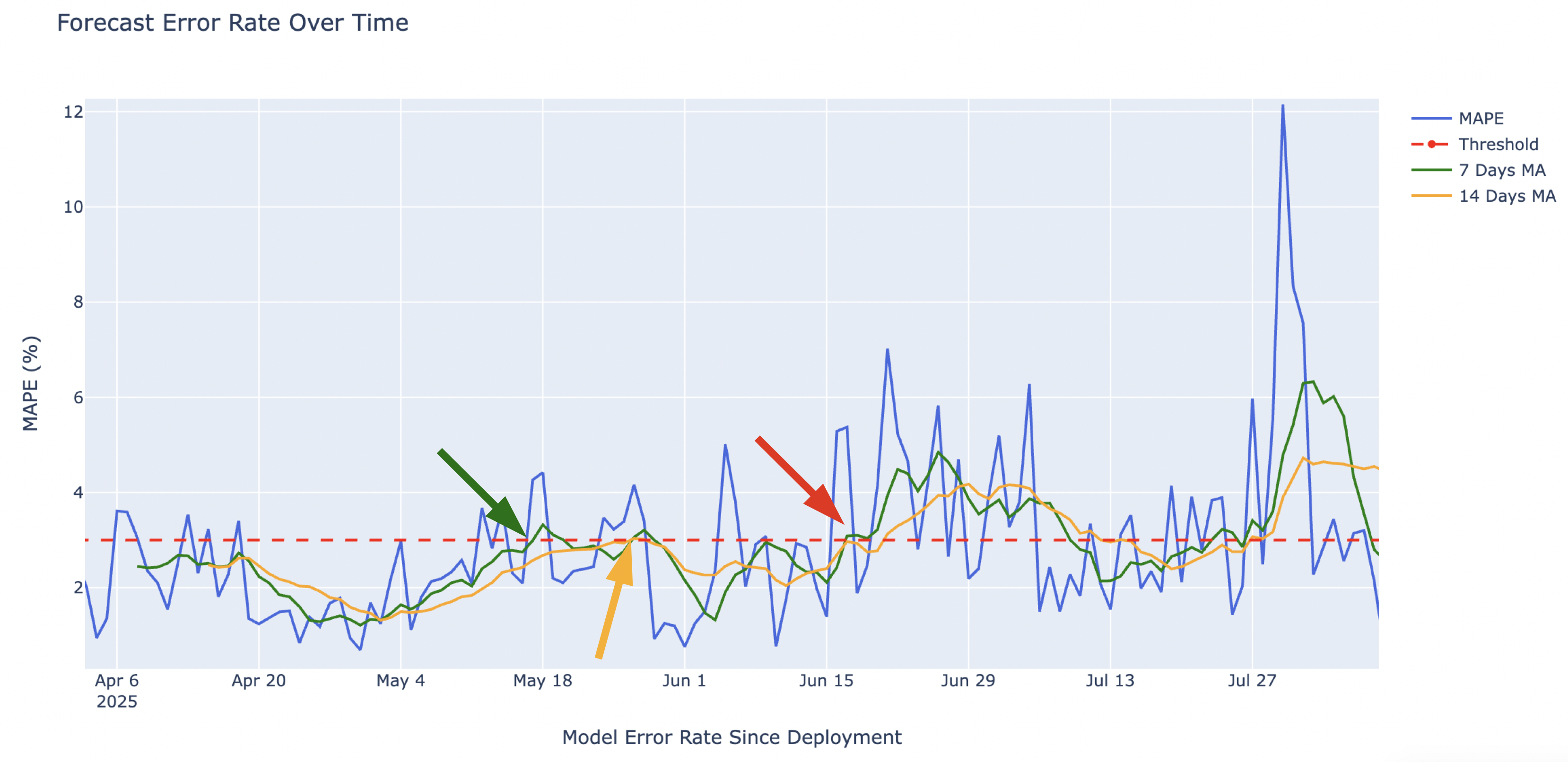
Let's practice!
Designing Forecasting Pipelines for Production

